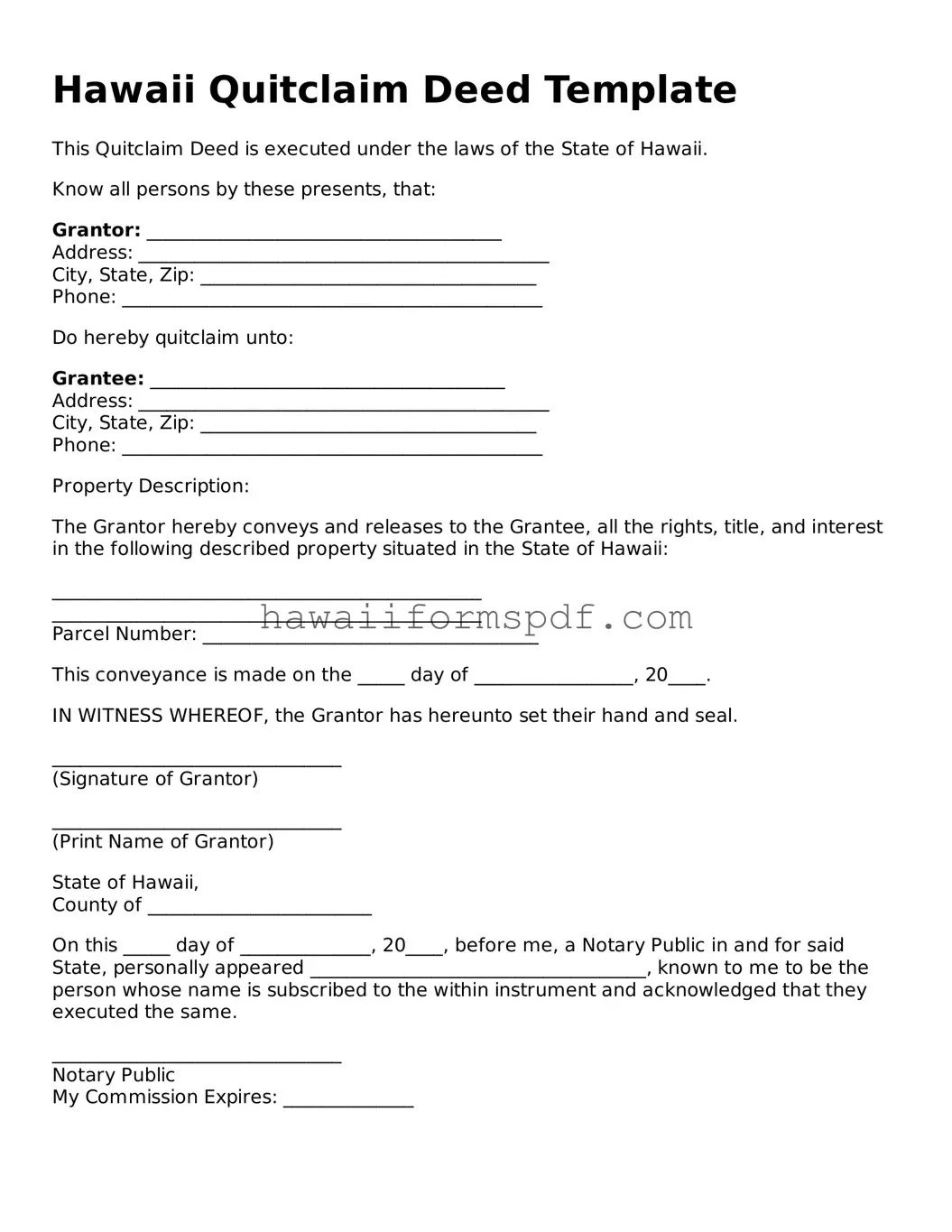Hawaii Quitclaim Deed Template
This Quitclaim Deed is executed under the laws of the State of Hawaii.
Know all persons by these presents, that:
Grantor: ______________________________________
Address: ____________________________________________
City, State, Zip: ____________________________________
Phone: _____________________________________________
Do hereby quitclaim unto:
Grantee: ______________________________________
Address: ____________________________________________
City, State, Zip: ____________________________________
Phone: _____________________________________________
Property Description:
The Grantor hereby conveys and releases to the Grantee, all the rights, title, and interest in the following described property situated in the State of Hawaii:
______________________________________________
______________________________________________
Parcel Number: ____________________________________
This conveyance is made on the _____ day of _________________, 20____.
IN WITNESS WHEREOF, the Grantor has hereunto set their hand and seal.
_______________________________
(Signature of Grantor)
_______________________________
(Print Name of Grantor)
State of Hawaii,
County of ________________________
On this _____ day of ______________, 20____, before me, a Notary Public in and for said State, personally appeared ____________________________________, known to me to be the person whose name is subscribed to the within instrument and acknowledged that they executed the same.
_______________________________
Notary Public
My Commission Expires: ______________
